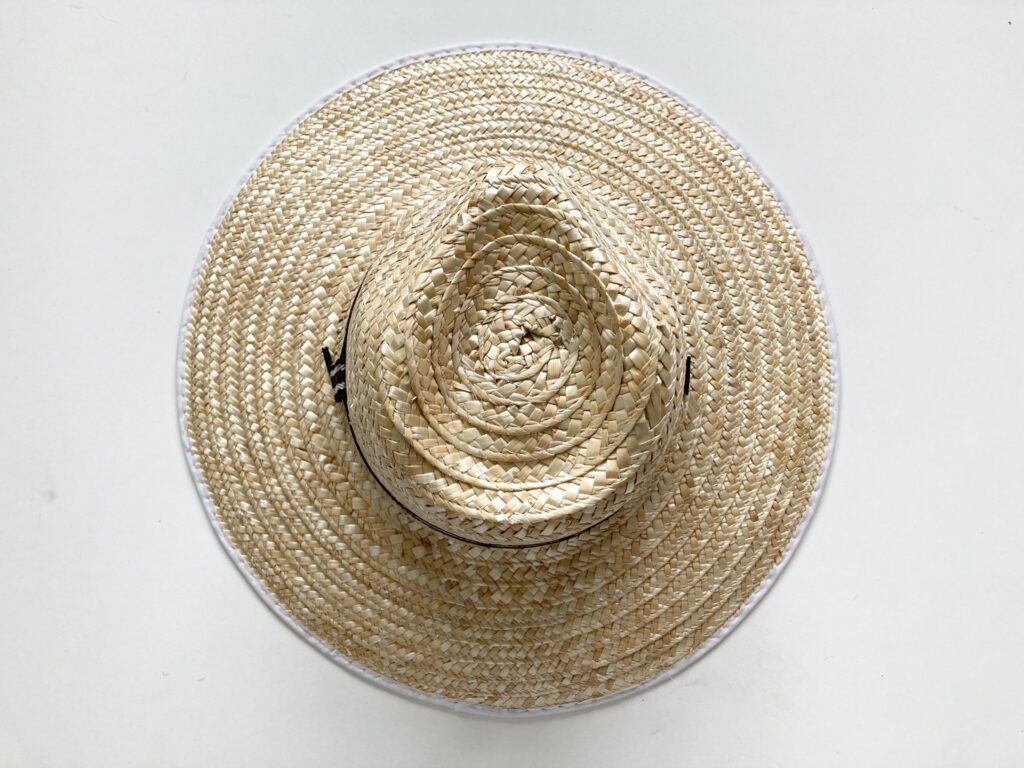您可能听说过戴帽子会对头皮造成压力并导致秃头的说法。
这种想法会让一些人感到焦虑,对戴帽子犹豫不决。
但从医学的角度来看,事实真的如此吗?
本文将探讨帽子与脱发或头发稀疏之间的关系,并介绍如何预防潜在的问题。
目录
经常戴帽子会导致秃头吗?

先说结论:戴帽子不会直接导致秃头。
例如,夏天戴帽子抵御紫外线,或者周末偶尔戴一顶帽子作为时尚配饰,脱发的风险都很小。例如,夏天戴帽子抵御紫外线,或者周末偶尔戴一顶帽子作为时尚配饰,脱发的风险都很小。
不过,长时间戴帽子会对头皮和头发造成多方面的影响,间接增加头发脱落的风险。
帽子如何导致脱发

那么,长期使用帽子究竟会导致什么问题,又有哪些具体风险可能导致脱发呢?
汗水和潮湿导致头皮环境恶化
由于帽子覆盖整个头部,长时间使用会积聚热量,导致头皮潮湿。
当汗液和皮脂无法完全蒸发时,就会堵塞毛孔,让细菌滋生。
这可能会导致发炎、瘙痒、头皮屑,甚至影响头发生长--导致脱发。
在炎热潮湿的夏季、户外工作或运动时需要特别注意,因为这些情况很容易让湿气容易在帽子内积聚。
紧帽子导致血流受限
头皮上布满了脆弱的毛细血管,为发根提供营养和氧气。
如果帽子戴得太紧,会对头部造成压力,减少头皮的血流量。
因此,毛囊获得的氧气和营养可能会减少,从而扰乱头发的生长周期,使头发变得更稀疏、更容易脱落。
摩擦造成的头发损伤
提到脱发,大多数人都会关注头皮或毛囊的损伤,但头发本身的摩擦也可能是脱发的一个因素。
戴帽子时,内层布料会与头发摩擦,损伤角质层,增加头发断裂的几率。断裂的几率。
受摩擦损伤的头发也容易失去发量和强度,从而更容易脱落。
长期使用引起的牵引性脱发
牵引性脱发是一种由于头发反复受到拉力而引起的病症,它会给头皮造成压力,导致患处脱发。
这种情况通常出现在扎马尾辫或辫子等紧身发型的女性身上,但经常戴帽子和摘帽子也会拉扯头发,引发这种脱发。头发,引发这种类型的脱发。
此外,戴非常紧的帽子可能会压迫发根,给头皮造成压力,导致头发脱落。
可能增加脱发风险的戴帽错误

戴错帽子或戴不正确的帽子会给头皮带来不必要的压力,增加脱发的风险。以下是一些需要注意的要点:.
戴不合适的帽子
许多人选择较小的帽子尺寸,以防止帽子随风飞舞。
不过,帽子太紧会挤压头皮,限制血液流动。
因此,发根可能得不到足够的氧气或养分,从而可能影响头发的生长,导致脱发增加。
另一方面,过大的帽子可能会在头上晃动,造成摩擦,从而损伤头发,导致断裂或脱落。
长时间佩戴不透气的帽子
用透气性差的材料制成的帽子长时间佩戴会吸附热量和湿气,助长细菌滋生和毛孔堵塞。
尼龙和乙烯基等材料的透气性较差,不能很好地吸汗,会导致帽子内湿度增加。
这会使头皮环境恶化,导致头皮屑、瘙痒和脱发。
湿发戴帽
很多人早上上班前都要洗澡。
不过,在头发完全干透之前戴帽子会吸附湿气,加重头皮状况。
湿发的角质层也是开放的,因此更容易受损。
如果再加上帽子的摩擦,就会增加断裂的风险。
帽子不干净
反复戴同一顶帽子而不清洗,会让汗水、皮脂和灰尘在帽子内积聚,为细菌的滋生创造理想的环境。
当然,戴着充满细菌的帽子会使头皮状况恶化,增加脱发的风险。
这一点在夏季、户外工作或运动时尤为重要,因为在这些情况下出汗更为频繁。
喜欢戴帽子的人如何防止脱发

听说长期戴帽子可能会增加脱发的风险,这可能会令人担忧--尤其是对于那些喜欢戴帽子的人来说。听说长期戴帽子可能会增加脱发风险,这可能会令人担忧--尤其是那些喜欢把戴帽子作为日常造型一部分的人。
那么,如何才能在继续享受帽子的同时将风险降到最低呢?
选择合适的帽子
选择合适的帽子是预防脱发最重要的步骤之一。
如前所述,潮湿和滞留的湿气会损害头皮,因此网眼布等透气材料是理想之选。
为了保持卫生和防止细菌滋生,还应考虑到清洗的方便性。
查看护理标签,了解帽子是否可以机洗,并查看洗涤说明。
如果难以定期清洗,可以考虑使用吸汗内帽,以保持帽子内部的清洁。
日常头皮护理
适当的头皮护理对防止脱发和头发稀疏至关重要。
除了用温和的洗发水洗去皮脂和污垢外,一定要用吹风机及时吹干头发,以保持头皮清洁。
头皮按摩也很有效,因为它能促进血液循环,帮助向发根输送营养和氧气。
用指尖以舒适的力度轻轻按压和按摩整个头皮。
在阳光强烈的日子里,要戴帽子防紫外线,还可以考虑使用头皮专用的防晒喷雾。
季节性预防措施
您的头皮状况会随着季节的变化而变化,因此相应地调整您的方法也很重要。
夏季高温高湿,应选择透气性好的帽子,并经常擦汗。
最好选择可清洗材料制成的帽子,并定期清洗,就像清洗内衣或其他日常服装一样。
冬季干燥,应选择保暖和保湿材料制成的帽子,如针织帽,以保护头皮免受寒冷侵袭。
常见问题:关于帽子和脱发的常见问题
以下是一些有关帽子与脱发之间关系的常见问题,以及专家的解答。
问: 某些帽子材料是否更容易导致脱发?
答:某些合成纤维(如聚酯、尼龙和腈纶)的透气性较差。
长期佩戴这些材料制成的帽子,尤其是在出汗较多的夏季,可能会使头皮环境,并有可能增加脱发的风险。
问: 如果我的头发已经稀疏,戴帽子是不是个坏主意?
答: 如果您的头发稀疏,建议您戴一顶帽子,以保护头皮免受紫外线和环境压力的伤害。
但是,帽子如果清洁不当,会对头皮产生负面影响。
请务必定期清洗帽子,并始终保持帽子的清洁,以免使问题更加严重。
如果您担心脱发,请咨询男性荣耀诊所
导致男性脱发和头发稀疏的原因很多,不仅仅是戴帽子,因此及早采取措施非常重要。
近年来,越来越多的医疗诊所开始提供头发稀疏的治疗,但许多人仍然犹豫不决,因为他们担心:"如果有熟人看到我怎么办?"如果我认识的人看到我怎么办?"或 "我工作太忙,无法定期预约......."
对于这些人,男性荣耀诊所提供在线咨询,让您可以在舒适的家中接受脱发治疗。对于这些人,Men's Pride Clinic 提供在线咨询,让您可以在家中舒适地接受脱发治疗。
由于所有咨询都是通过电话进行的,因此您不必担心被人看到。
您只需支付药物费用,无需支付额外的咨询或旅行费用。
如果您已经尝试换戴更透气的帽子,但脱发或头发稀疏的情况仍未得到改善,请不要不要犹豫,联系 Men's Pride Clinic 寻求帮助。
结论
戴帽子不会直接导致秃头。
然而,长期使用不合适、不通风或不保持清洁的帽子会对头皮环境造成负面影响,间接导致脱发或头发稀疏。
如果您在开始经常戴帽子后发现脱落增多,请尝试实施本文介绍的预防措施。本文介绍的预防措施。
此外,还可以考虑去看专科医生,进行适当的检查和治疗,以尽早解决问题。


